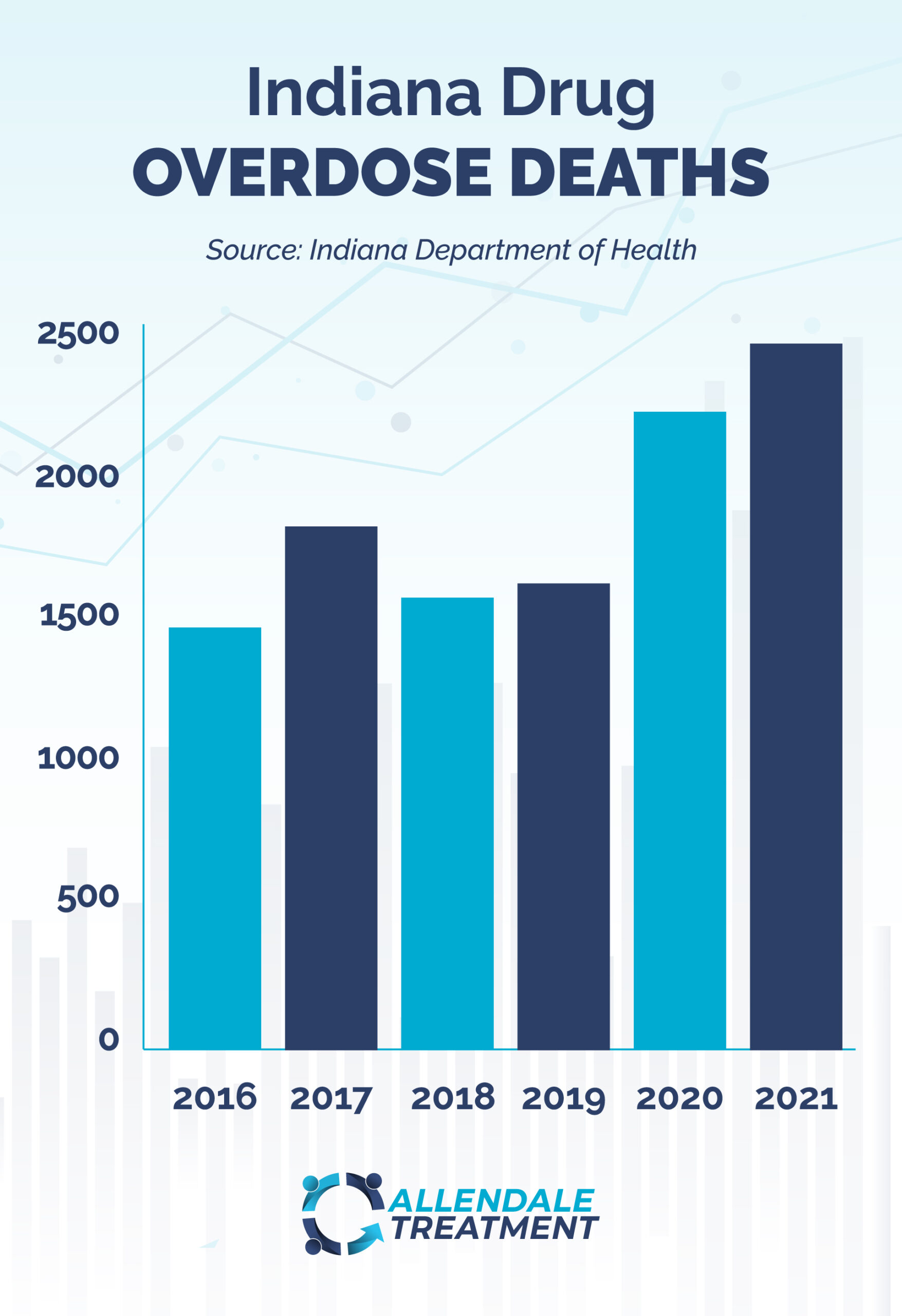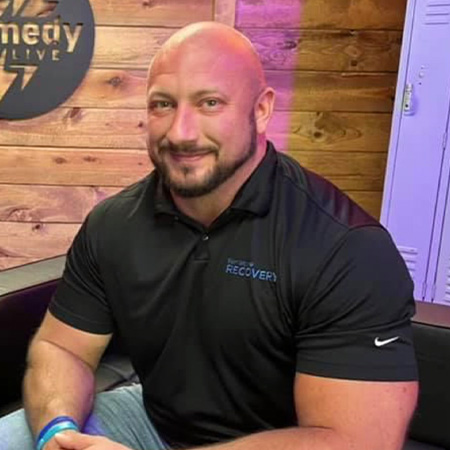A State in Crisis: How Indiana and Allen County Are Combatting Drug Overdoses
A State in Crisis: How Indiana and Allen County Are Combatting Drug Overdoses
Since the onset of the pandemic drug overdoses throughout the state of Indiana have increased significantly. In 2021, over 2,500 Hoosiers died as a result of a drug overdose and most of those deaths were due to opioid use.
Certain counties like Allen saw a reported 1,200 overdoses alone which resulted in 138 people losing their life.
Updated: 2023
Written by: Allendale Treatment
If you or anyone you know are struggling with addiction, call (833) 338-6946 to speak with a professional.
Before the pandemic drug overdoses were trending down in Indiana but shot up again in 2020 hitting a record high in 2021. It’s clear that people throughout the state are turning to illegal drugs and alcohol to help cope with the challenges brought on by the pandemic.
In 2020, 124 Hoosiers were involved in alcohol-related fatalities which prompted law enforcement officials to implement programs such as sobriety checkpoints to help prevent future alcohol-related fatalities.
Law enforcement throughout the state including Allen County has also turned their focus to finding ways to combat an illegal substance that has taken over the drug scene since 2020, fentanyl.

What’s Led to the Increase in Overdoses?
According to Fort Wayne police officer Mark Gerardot, the increase in overdoses is primarily due to the flooding of fentanyl into Indiana. “It’s highly addictive and has created the worst drug problem I’ve seen in my 18 years as a cop,” says Gerardot.
Fentanyl is a synthetic opioid that is 50 times stronger than heroin and 100 times stronger than morphine. Fentanyl attaches to the brain and its fast-acting effects can quickly cause someone to overdose or die. It is often added to other drugs because of its extreme potency, which makes other illegal drugs cheaper, more powerful, addictive, and dangerous.
Nate Moellering a community outreach coordinator at Allendale Treatment and Fort Wayne Recovery says another reason fentanyl has become such a problem has to do with its accessibility and cost. “Everything has fentanyl in it now. It doesn’t matter if you’re buying cocaine, methamphetamines, or illegal versions of pills like Xanax or Percocet, they’re either laced with fentanyl or they’re counterfeit and straight up fentanyl.”
Another trend that’s contributing to the increase in overdoses is the increase in young people who’re using fentanyl. “We’re seeing a huge uptick in the number of young people between the ages of 18-21 that are dying from overdoses and this is in large part to fentanyl being labeled as other drugs or being laced with other drugs,” says Moellering. A lot of opioid users are also using meth now since the price of meth went down and now some opioid users are using both.
“Drug dealers are targeting young people through the app Snapchat and selling counterfeit drugs that are mislabeled so a 19-year-old may think they’re buying Adderall but it’s in fact fentanyl.”
“Drug dealers are targeting young people through the app Snapchat and selling counterfeit drugs that are mislabeled so a 19-year-old may think they’re buying Adderall but it’s in fact fentanyl.”

Nate Moellering
Community Outreach
How Incarceration Contributes to Drug Overdoes
Last year over 85,000 people in Indiana were arrested for possession or selling illegal drugs and 1 in 5 of those people died from an overdose shortly after they were released.
When people with substance abuse issues aren’t able to receive treatment for their addiction, they’re going to start using drugs soon after getting out of jail which is why the average overdose occurs only 5 months after they leave jail.

Tommy Streeter is also a community outreach coordinator for Allendale Treatment and Fort Wayne Recovery and says that when people leave prison with a substance abuse issue, they end up reoffending or overdosing because they haven’t addressed the underlying issues that are driving their addiction. “Drugs and alcohol are the symptoms of the disease of addiction, they’re not the cause of the addiction,” says Streeter.
“There needs to be a dual diagnosis approach to drug and alcohol recovery because if people don’t receive treatment for the underlying mental health issues that are causing them to use illegal drugs, it’ll be almost impossible for them to achieve long-term sobriety
People with Substance Abuse Issues
Are Also Likely to Overdose After Being Hospitalized
Indiana has also been looking at the relationship between hospitalization and overdosing. There were nearly 6,000 hospitalizations from drug use in 2021, with more than 400 of those hospitalizations coming from Allen County. And more sobering nearly two-thirds of people who visited an ER in Indiana after overdosing: died from another overdose within a year.
Moellering says that he was almost one of those people after he overdosed twice within 24 hours of checking himself out of the ER after his first overdose. “I was at my girlfriend’s house when I overdosed and when I came to first responders were putting me into an ambulance.
When I got to the hospital, I decided to leave against medical advice and within 6 hours I had gotten more dope and was back at her house and had shut myself away in the bathroom where I overdosed again and EMS had to revive me for the second time in the same day. I wasn’t actively trying to kill myself but I just didn’t care anymore.”
Thankfully Moellering says that he crossed paths with officer Gerardot who convinced him to seek help. He received treatment and is in long-term sobriety. “For me, Nate is the poster child for not giving up when someone is struggling with an addiction,” says Gerardot.
How Indiana is Working to Combat Drug Overdoses
Earlier this year Indiana started the Integrated Re-entry and Correctional Support Program (IRACS) which is focused on providing addiction recovery services to Hoosiers who are incarcerated for illegal drug charges. The pilot program is available to inmates at five jails throughout the state in rural areas including Scott County which had 773 drug arrests in 2021 with over half of them being for methamphetamines.
The Indiana Department of Health is also offering multiple programs to combat drug use throughout the state and currently, 75 of Indiana’s 92 counties are offering at least one kind of substance abuse program. Two of those programs are focused on preventing overdoses.
The key to combatting Indiana and Allen County’s overdose problem says Gerardot, is looking at the big picture. “We need to focus on proper drug rehabilitation and harm reduction instead of just arresting someone and incarcerating them when they overdose or we find a needle,” says Gerardot. “Jail is only a temporary solution and once a drug user can maintain their sobriety after treatment, it’ll eliminate so many issues including drug overdoses.”
If you or anyone you know are struggling with addiction, call (833) 338-6946 to speak with a professional.


